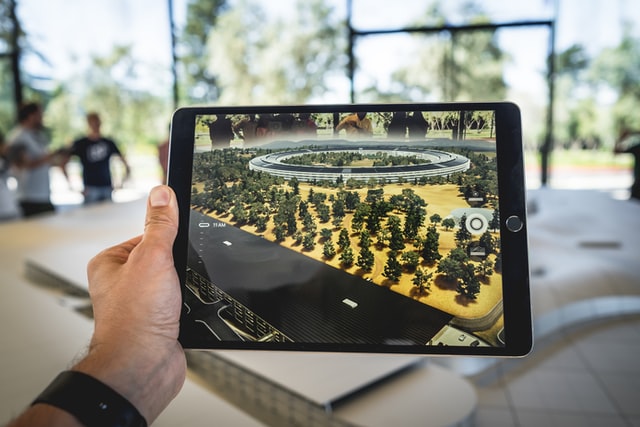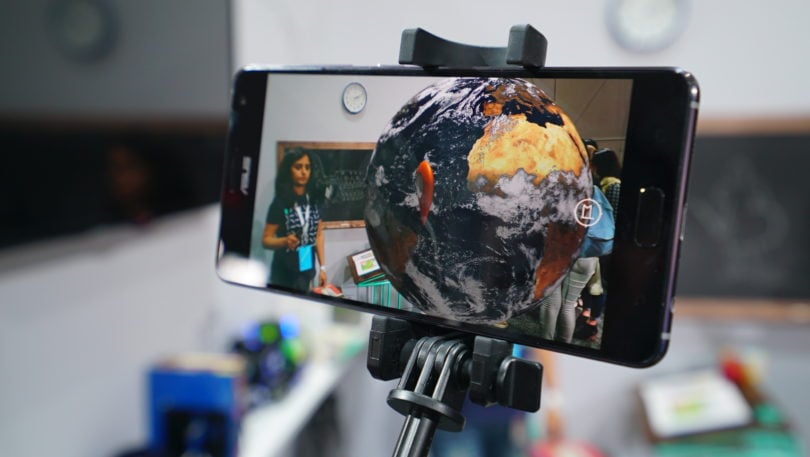 Photo by Patrick Schneider on Unsplash
Photo by Patrick Schneider on Unsplash
AR can be a stepping stone to a more inclusive learning experience for students with special needs
According to the World Health Organization, around 15 percent of the world’s population lives with some form of disability or special educational needs—and of that 15 percent, 2 to 4 percent experience significant difficulties in functioning.
However, the global disability prevalence is thought to be higher than previous WHO estimates, which date from the 1970s. Instead, data from last year suggests a figure of around 10 percent is more accurate, with 190 million (3.8 percent) who are 15 or older and have significant difficulties in functioning.
Given these facts, it seems like a paradox, then, that students with special needs relating to conditions such as autism (ASD), ADHD, dyslexia, Down’s Syndrome, and hearing difficulties can often feel left behind in a classroom environment in comparison to their peers.
Fortunately, education is progressing to become more inclusive of those with different learning styles and educational needs, but there is still a lot that can be done to make the classroom more inclusive for each and every student. It is becoming more and more apparent that it is time we rethink not just what we teach, but exactly how we teach.
One medium that could provide learning support for students with special needs in the near future is the use of augmented reality (AR) in education. This technology can break down barriers in a learning environment. As one study by The European Journal of Special Needs Research from last year explains:
“The results showed that the AR applications had a large effect across the 16 single-subject studies. The effect of AR was the largest in promoting an individual’s learning skills, followed by social skills, physical skills, and living skills. This study offers an important insight into the relative success of AR in promoting academic and functional living skills to individuals with special needs. It also offers research-based guidance to decision-makers for supporting adolescents with special needs, such as autism spectrum disorders and intellectual disabilities.”
AR is beneficial as it overlays virtual images onto real world images in real time. It allows students to see, hear and touch the knowledge in a fun and engaging way. In addition, educators may be able to create personalized learning plans by studying AR users’ data, thus allowing the educator to tailor lessons to a student’s specific needs and subsequently allowing them to access the best ways to motivate their student.
Many AR apps are easily accessible, inexpensive, and can be used anywhere at any time. They also have the ability to allow students to retain information much better than standard lessons due to them being interactive and fun, with one study from Nigeria in January 2020 finding that AR devices enhance the learners’ performance and retention, regardless of the gender of the pupil.
To give some examples, students who struggle with coordination may benefit from being able to interact with 3D shapes and pictures showing geographical locations, which also had the added benefit of exposing children to different cultures, landscapes, and environments.
Research also suggests that, for students with cochlear, hearing or speech impediments who use smartphone technology or headsets that incorporate AR platforms, the learning gap narrows when it comes to their ability to converse, communicate, and understand.
Outlets such as the Augmented Classroom by CleverBooks, which features content that focuses on STEM, could similarly be used to help students who may struggle from math-based issues, such as dyscalculia. Other apps can also let students experience the wonders of space and to navigate the galaxy without needing to leave their seats.
Language apps can be applied through AR, which in turn can help a student improve both fluency in another language and pronunciation of words in different languages.
Another study that detailed the effects of this type of technology on educational inclusion was featured on the website of the National Center for Biotechnology Information (NCBI). The authors listed a variety of positive conclusions about using such technology to educate children with SEN. Some of these findings included:
• The greatest effect is improving communication skills in students with disabilities, especially oriented to those with hearing problems.
• Among the advantages reported were motivation, interaction, and catching the interest of the student with a disability–all criteria that help inclusive education.
• In general, all studies ended with a minimum of positive effects on students with different needs, and, depending on the case, it improved their experience in the educational system taking advantage of the benefits of the AR.
Overall, it is apparent that this is the one of, if not the best, tool that a teacher in the 21st century can employ in order to engage their pupils of all learning abilities and learning styles in their lessons. Although it has only been around for less than two decades, it is nevertheless evolving at a rapid rate and is constantly being improved on across all areas.
For parents, educators, and students alike, it is important that we empower students, especially students with special needs, to reach their full potential, regardless of their academic abilities. Early intervention and exposure to AR is key to their successful inclusion into society.
Discover more AR solutions with RobotLAB!
AR Classroom Pack: https://www.robotlab.com/store/ar-vr-classroom-pack


